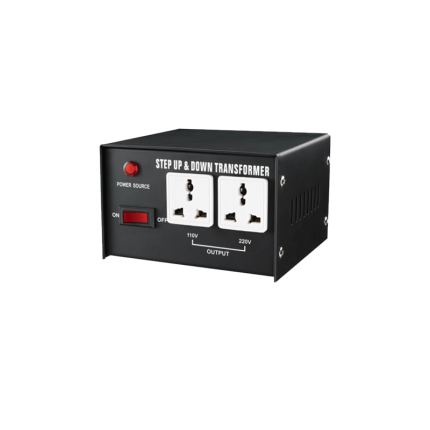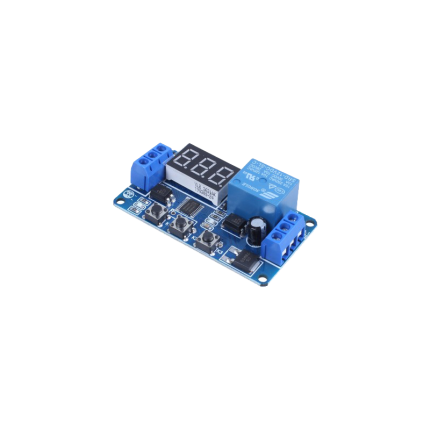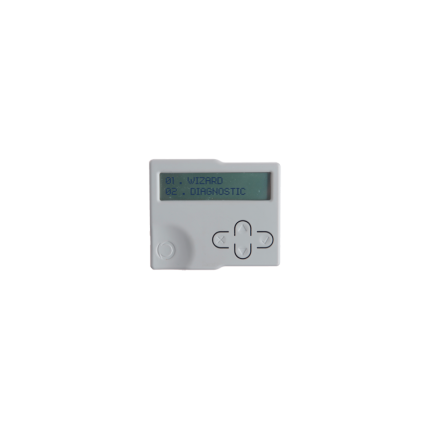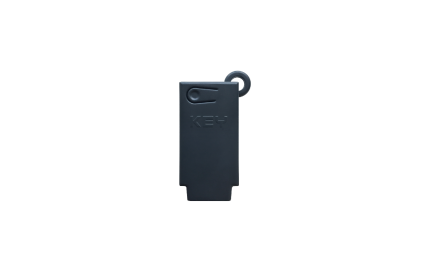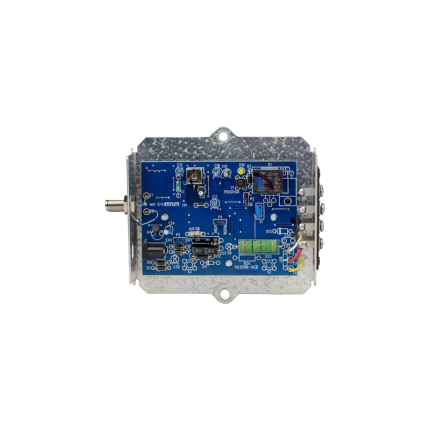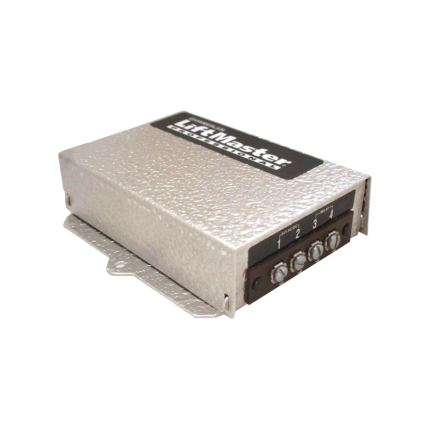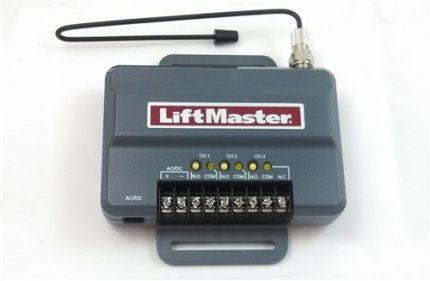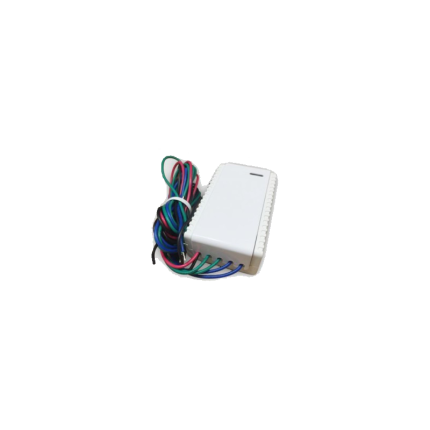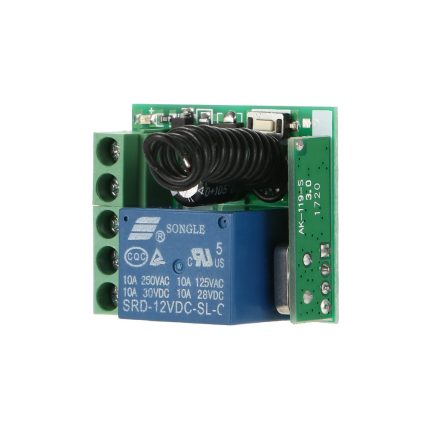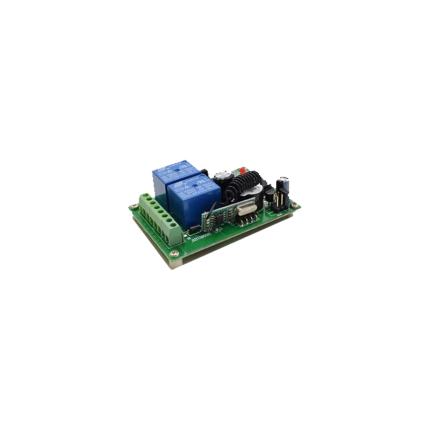Shop
Power inverter 110 V to 220 V
Ship or pick up from our office.
Power inverter 110 V to 220 V
A power inverter 110V to 220V (also known as a step-up voltage converter) is an electronic device that transforms an input voltage of 110 volts (V) into an output voltage of 220V. This type of inverter is crucial for bridging the gap between different regional electrical standards. How It Works At its core, a 110V to 220V power inverter utilizes a transformer to achieve the voltage conversion. Here's a simplified explanation:- Input (DC to AC Conversion for Inverters): While the prompt asks about a "power inverter 110V to 220V," it's important to clarify that traditional inverters convert DC (Direct Current) from a battery (e.g., 12V, 24V, 48V) into AC (Alternating Current). If the input is already 110V AC, then the device is more accurately called a voltage converter or transformer, as it's stepping up AC to AC. However, some inverters are designed to take a DC input and produce 110V AC or 220V AC, or even both.
- Step-Up Transformation: For a 110V AC to 220V AC conversion, the device contains a transformer with primary and secondary coils. The 110V AC from the power source is fed into the primary coil. Through electromagnetic induction, this voltage is "stepped up" to 220V in the secondary coil, which then becomes the output.
- Waveform: Inverters and converters can produce different types of AC waveforms:
- Pure Sine Wave: This is the most desirable waveform, replicating the smooth, consistent power from a utility grid. It's ideal for sensitive electronics.
- Modified Sine Wave: This is a cruder approximation of a sine wave and is generally suitable for less sensitive appliances, but can cause issues or damage with certain delicate electronics.
- Power Capacity (Wattage): This indicates how much power the device can supply. Ensure it's sufficient to handle the total wattage of the appliances you intend to connect. Exceeding the inverter's capacity can lead to damage.
- Efficiency: A higher efficiency rating means less energy is wasted as heat during the conversion process, which is important for battery-powered setups.
- Safety Features: Look for features like overload protection, short-circuit protection, and surge protection to safeguard your appliances and the inverter itself.
- Frequency: Electrical grids operate at either 50 Hz or 60 Hz. Ensure the inverter's output frequency matches the requirements of your appliances. Some inverters can switch between frequencies.
- Portability: Some are designed for travel, while others are larger for industrial or home use.
- International Travel: They allow travelers from countries with 110V systems (like North America) to use their 220V appliances (like hair dryers, chargers) in countries with 220V outlets (common in Europe, Asia, and other regions).
- Using Imported Appliances: If you have an appliance designed for 220V (e.g., a European kitchen appliance) but your home has 110V outlets, a step-up converter enables you to use it.
- Industrial and Specialized Applications: In industries, they can be used for automation and control systems, telecommunications, and emergency power systems to ensure compatible power supply for various equipment.
- Renewable Energy Systems: In off-grid solar or wind power setups, inverters convert DC power from batteries into the required AC voltage (which could be 110V or 220V depending on the load).
- High-Power Appliances: Some larger appliances or specialized tools might require 220V power, even in regions where 110V is standard for most household items. A converter can provide the necessary voltage without extensive electrical rewiring.
Programmable timer relay
Ship or pick up from our office.
Programmable timer relay
A programmable timer relay is an electronic device that combines the functions of a timer and a relay, allowing users to set specific time delays for switching electrical circuits on or off. Essentially, it acts as an automated switch that operates based on pre-programmed time intervals. This enables the automation of various processes and equipment across a wide range of applications. How it Works Programmable timer relays incorporate internal circuitry (often microcontrollers or digital logic chips) that allow for precise timekeeping and control. Here's a general overview of how they function:- Control Signal: The programmable timer relay receives an input or "trigger" signal, which initiates the timing process. This signal can come from a switch, sensor, or another control device.
- Timing Mechanism: Once the signal is received, the internal timing mechanism begins to count down or up based on the programmed parameters.
- Delay Period: During this delay, the relay's contacts remain in their initial state (either normally open or normally closed).
- Contact Switching: Once the programmed delay period elapses, the relay's contacts change state, either closing to allow current to flow or opening to interrupt it.
- Maintaining State & Resetting: The relay maintains its new state until the input signal is removed, or a reset function is triggered. Programmable relays offer various timing modes, such as:
- On-delay: The relay activates after a set delay once the input signal is applied.
- Off-delay: The relay deactivates after a set delay once the input signal is removed.
- Interval: The relay activates for a set period and then deactivates.
- Cyclic: The relay repeatedly alternates between on and off states for specified durations.
- Industrial Automation: They control the sequencing of machinery, conveyor belts, pumps, and other equipment in manufacturing processes, ensuring precise timing and preventing system overloads.
- Lighting Control: Used in homes, commercial buildings, and street lighting to turn lights on and off at specific times or based on ambient light levels, optimizing energy consumption and security.
- HVAC Systems: Regulate fan operations, compressor cycles, and defrost cycles in heating, ventilation, and air conditioning systems to maintain desired temperatures and reduce energy use.
- Security Systems: Implement delays for door locks, alarm systems, and surveillance cameras, allowing for controlled access and scheduled activation/deactivation.
- Pump Control: Manage water pumps, sewage pumps, and sump pumps, ensuring they operate only when needed, which conserves water and prevents pump damage.
- Home Automation: Automate various household appliances like irrigation systems, washing machines, and dishwashers.
- Vehicle Systems: Control functions like intermittent windshield wipers and turn signals.
- Versatility and Customization: They can be programmed for various timing functions and sequences within a single unit, offering great flexibility for diverse applications.
- Energy Savings: By automating on/off cycles and ensuring equipment runs only when necessary, they help reduce energy consumption and costs.
- Increased Efficiency: They enable automated control of equipment and processes, improving overall operational efficiency and reducing the need for manual intervention.
- Reduced Components and Wiring: By integrating multiple timing and switching functions into one device, they can replace several individual timers and relays, simplifying wiring, reducing component inventory, and saving space in control panels.
- Cost-Effectiveness: For simpler automation tasks, they offer a more economical solution compared to full-fledged PLCs.
- Ease of Use: Many programmable timer relays feature user-friendly digital interfaces or software, making them relatively easy to configure without requiring extensive programming knowledge.
- Precise Time Control: They offer high temporal precision, with delays ranging from milliseconds to several hours.
- Troubleshooting: Integrated displays often provide alarm messages and I/O status, simplifying troubleshooting.
Programmer module -Key Automation 900DYL
Ship or pick up from our office.
PRODUCT SHEET PDFProgrammer module -Key Automation 900DYL
*REMOTE LCD CONTROLLER *Display module cable length: 120 cmThe Key Automation 900DYL is a programming module used to configure and customize the settings of Key Automation 14A control units, commonly found in sliding and swing gate openers.
It allows installers to adjust parameters and settings of the gate automation system, such as torque, tension, and auto-close features. It also facilitates the addition of new remote controls.
Here's a more detailed breakdown:
-
Programming Module:The 900DYL is a specific programmer designed for the Key Automation 14A control board.
-
Customization:It enables adjustments to various settings of the gate opener, including speed, force, and other operational parameters.
-
Remote Control Integration:The programmer allows installers to add and configure new remote controls for the gate opener.
-
Emergency Release:In case of a power failure, the 900DYL, in conjunction with the gate opener, provides an emergency release mechanism.
-
Applications:It's used with both sliding and swing gate operators, and it's compatible with the 14A control unit.
Programmer module -Key Automation KUBEPRO
Ship or pick up from our office.
PRODUCT SHEET PDFProgrammer module -Key Automation KUBEPRO
*KUBEPRO - Installer Version *Smartphone programming for 14A and HALO control boardsThe Key Automation KUBEPRO is a programmer module that allows professional installers to configure and manage Key Automation gate and door operators using a smartphone.
It connects via Bluetooth to the installer's smartphone and allows them to adjust parameters, set up the gate opener, and manage other aspects of the automation system.
The KUBE PRO also includes the KEY CLOUD service for data viewing, backup, team management, and maintenance scheduling.
Here's a more detailed breakdown:
-
Purpose:The KUBEPRO is designed for professional installers to configure and manage Key Automation gate and door operators.
-
Functionality:It allows installers to adjust various parameters, set up the gate opener, and manage other settings directly from their smartphone.
-
Connectivity:It connects to the gate operator's control board and uses Bluetooth to communicate with the installer's smartphone.
-
Smartphone App:An app, specifically designed for professional installers, is used to interact with the KUBEPRO module.
-
KEY CLOUD:The KUBE PRO module includes KEY CLOUD, a cloud-based service for storing data, managing teams, and scheduling maintenance.
-
Accessibility:The KUBE PRO module is restricted to users with a Key Automation account, ensuring proper authorization and usage.
Radio receiver – LiftMaster 312HM
Ship or pick up from our office.
Radio receiver – LiftMaster 312HM
A LiftMaster radio receiver is a device that allows LiftMaster garage door openers, gate operators, and other access control systems to communicate wirelessly with remote controls or keypads. These receivers are crucial for enabling remote operation of devices and are often used in both residential and commercial settings.
Here's a more detailed explanation:
-
Functionality:LiftMaster radio receivers act as a bridge, translating the signals from a remote control or keypad into commands that the opener or operator can understand and execute.
-
Types:There are various types of LiftMaster receivers, including those designed for garage door openers, gate operators, and commercial door operators.
-
Security:Many LiftMaster receivers, especially those with Security+ 2.0 technology, use rolling code encryption to enhance security and prevent unauthorized access.
-
Compatibility:LiftMaster receivers are designed to be compatible with a range of LiftMaster remote controls and keypads.
-
Installation:Receivers can be internal (built into the opener or operator) or external (connected via wiring to the opener or operator).
-
Features:Some receivers offer features like multi-channel support (allowing control of multiple devices), narrow-band technology (to minimize interference), and the ability to temporarily disable remotes.
-
Examples:
- 850LM: A universal receiver compatible with Security+ 2.0 remotes, often used in gated communities and for controlling multiple access points.
- 412HM: A 390MHz Liftmaster radio receiver commonly used with gate operators and commercial doors.
- STAR1000: A commercial receiver with advanced features like user management and copying remote settings.
- 850LM: A universal receiver compatible with Security+ 2.0 remotes, often used in gated communities and for controlling multiple access points.
Radio receiver – LiftMaster 412HM
Ship or pick up from our office.
Radio receiver – LiftMaster 412HM
How it Works:
- The receiver is installed on the gate or garage door opener's control board.
- It receives signals from the remote control.
- The receiver then transmits the signal to the opener's control board.
- The control board verifies the signal and activates the door or gate.
In essence, the 412HM allows you to control your gate or garage door with a LiftMaster remote, offering a secure and convenient access solution.
Radio receiver – LiftMaster 850LM – 3 Channels
Ship or pick up from our office.
Radio receiver – LiftMaster 850LM – 3 Channels
Universal Radio Receiver LiftMaster 850LM is used for garage doors and driveway gate operators.
- Universal Radio Receiver Liftmaster 850LM is suitable for residential and commercial sliding gates and swing driveway gates.
- Security Encrypted Code For Extra Dependability.
- Manage Multiple Access Points With A Single LiftMaster Radio Receiver.
- 3 channels for control of 3 driveway gate openers.
Radio receiver R5130
Ship or pick up from our office.
Radio receiver R5130
(Compatible with the wireless keypad control KW125) *AC/DC 12-24 V *2 Channels *433.92 MHzRadio receiver RECT102-V2.0 – CH2
Ship or pick up from our office.
Radio receiver RECT102-V2.0 - CH2
(Compatible with the wireless keypad control KW402 & KW125) *AC/DC 12-24 V *2-CH *433.92 MHz *Capacity: 2000 remotesRadio receiver RG315-12V1C
Ship or pick up from our office.
Radio receiver RG315-12V1C
* DC 12 V * 1 Channel * 315 MHz * Compatible with the Homelink system The RG315-12V1C is a radio receiver designed for automatic gate operators and garage doors. 🚧 It operates at a frequency of 315 MHz and is compatible with a wide range of gate operators, including Italian, Chinese, swing gate, sliding gate, and overhead garage door systems. Key Features- Operating Frequency: 315 MHz
- Voltage: 12V DC
- Compatibility: Works with various gate operators and garage doors.
- Capacity: Can store up to 100 remote controls.
- Signal Penetration: Its wireless RF signals can effectively pass through walls, floors, doors, and windows.
- Design: It's compact, lightweight, portable, and easy to install.
- Multiple Units: Multiple RG315-12V1C units can be used in the same location without interference.
- Gate Openers: Allowing remote control of swing gates and sliding gates.
- Garage Door Openers: Enabling wireless operation of overhead garage doors.
Radio receiver RG315-12V2C
Ship or pick up from our office.
Radio receiver RG315-12V2C
*DC 12 V *2-CH *315 MHz * Compatible with Homelink systemRadio receiver RG315-24V1C
Ship or pick up from our office.
Radio receiver RG315-24V1C
*DC 24 V *1 Channel *315 MHz * Compatible with the Homelink system A gate opener radio receiver is an electronic device that acts as the "ear" for an automatic gate system. Its primary function is to receive radio signals from a remote control (transmitter) and, upon recognizing a valid signal, instruct the gate opener's control board to activate the gate motor to open or close the gate. How it Works Here's a breakdown of how a gate opener radio receiver typically operates:- Signal Reception: When you press a button on your remote control, it sends out a radio signal at a specific frequency (e.g., 300MHz, 310MHz, 318MHz, 433MHz).
- Compatibility: The receiver is tuned to the same frequency as the remote control. For the system to work, the receiver and remote must also be compatible in terms of brand and radio protocol (e.g., rolling code, fixed code).
- Decoding: The receiver decodes the radio signal it receives. Modern systems often use "rolling code" technology for enhanced security, where the code changes with each use, making it very difficult for unauthorized individuals to duplicate or intercept.
- Command Relay: Once the signal is decoded and validated, the receiver relays the command to the gate opener's main control board.
- Gate Activation: The control board then triggers the gate motor, causing the gate to open or close.
- Internal vs. External: Some gate openers have built-in receivers, while others utilize external receivers that connect to the system. External receivers can be used as replacements if an internal one fails or to add functionality.
- Channels: Receivers can be single-channel (controlling one gate) or multi-channel (controlling multiple gates or other devices).
- Frequency: Receivers operate on specific radio frequencies, and it's crucial that the remote control matches the receiver's frequency.
- Security: Newer receivers often incorporate advanced security features like rolling codes or encrypted protocols to prevent unauthorized access.
- Range: The effective range of a receiver varies, typically from 50 to 100 feet, but some long-range receivers can extend this distance.
- Power Input: Receivers can operate on various voltages, such as 12V DC, 24V DC, or even 110V AC, depending on the gate opener system.
- Compatibility: While some receivers are universal, many are designed to work with specific brands or types of remote controls.
- Convenience: It allows users to open and close gates remotely, eliminating the need to manually operate them.
- Security: With coded and encrypted signals, it ensures that only authorized individuals can access the property.
- Flexibility: Many receivers can be programmed to work with multiple remote controls, accommodating various users.

